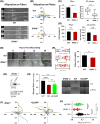Correction
- PMID: 33411330
- PMCID: PMC8793896
- DOI: 10.1096/fsb2.20812
Correction
Figures


Erratum for
-
Inositol polyphosphate multikinase is a metformin target that regulates cell migration.FASEB J. 2019 Dec;33(12):14137-14146. doi: 10.1096/fj.201900717RR. Epub 2019 Oct 30. FASEB J. 2019. PMID: 31657647 Free PMC article.
Publication types
LinkOut - more resources
Full Text Sources

